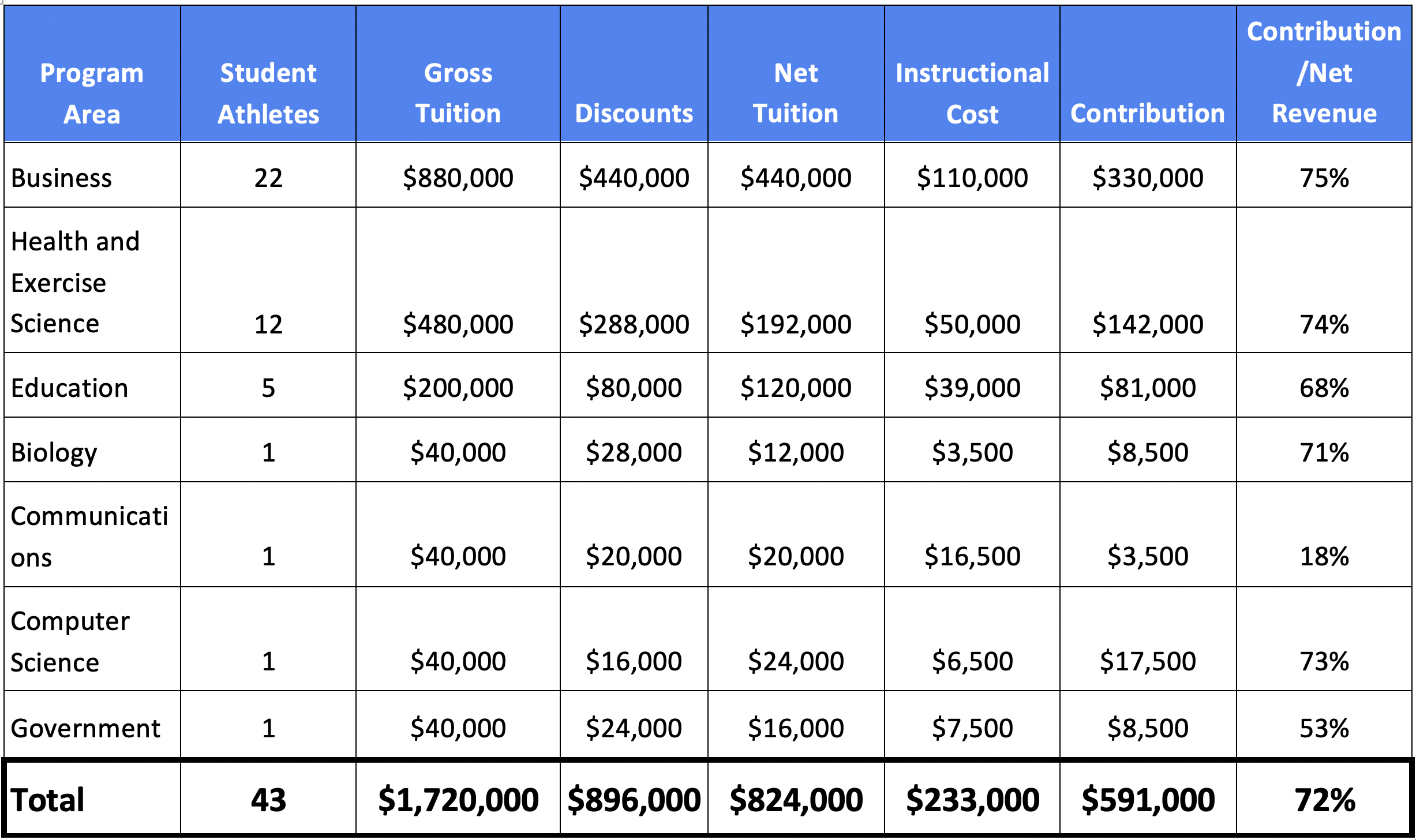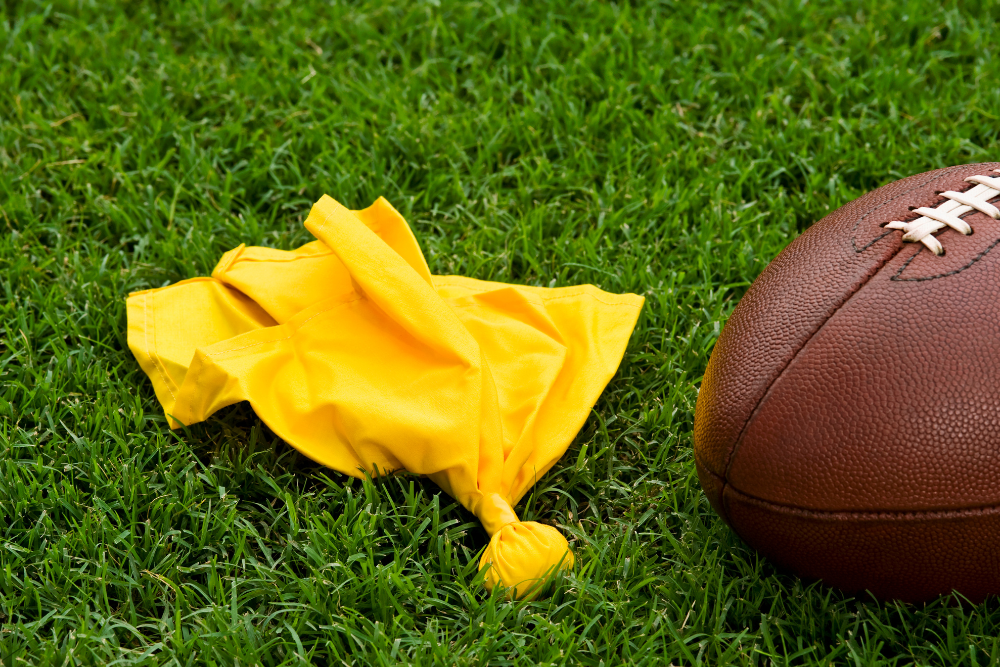Seems silly, but it might be true: Even a minor intramural sport like flag football may attract a few students and help retain other students by making them feel more connected to your community. Adding a major sport is a bigger commitment, but often pays for itself by increasing enrollment in your academic programs. The academic programs that benefit from athletic enrollment vary by sport, so the right sport may be able to increase enrollment in a specific program or discipline.
Let’s take a deeper look, first at major sports in Division 1, then at “Other Sports.”
Athletes and Academic Program Enrollment
Athletes go where their sport is offered. No football means no football players, fewer students in academic programs, and less tuition paid. At a more granular level, athletes tend to be attracted to specific academic programs. For example, as shown below, 28% of student athletes major in business, but only 18% of all students choose this major. On average 27% of all students major in STEM fields, but only 16% of athletes do. If your business program is flagging, adding football or baseball may help increase enrollment; the impact on STEM programs will be much less.

Source: NCAA Research
To calculate the effect of sports on academic revenue, cost, and margin, we added sports as a dimension in our Program Evaluation System (PES). We started by looking at Division One (D1) and the major sports offered, and the program choices that athletes make by sport.

“Other Sports” and STEM Program Interest
The charts suggest that investing in “Other Sports” could increase enrollment in your STEM programs (“Other Sports” include soccer, lacrosse, and flag football). If you need to grow STEM enrollment, one of the easiest ways to fill a seat might be to offer a new inexpensive sport, such as women’s soccer, lacrosse, or fencing, to attract STEM students.
Soccer, track and field, and the newest NAIA sport Women’s Flag Football are also athletic programs to consider. Even a small increase in enrollment can provide a big jump in revenue for smaller schools. These sports tend to be relatively cheap and easy to launch.
Flag Football: The Enrollment Opportunity
Specifically, for women’s flag football, there is already significant momentum by the NFL in the K-12 area. California school districts and California sports leagues are approving flag football as a high school sport. With NAIA already supporting enough teams to have seasons, it’s clear that both the NCAA and JUCO leagues can easily tap into this growing segment. In addition to capitalizing on the emerging trends, adding another women’s sport can help an institution comply with Title IX requirements. Lastly, flag football could be a path for athletes to play a version of the sport without risking as many concussions. The football fields and lights are already installed; it’s clear that those early adopters of flag football will be scoring enrollment touchdowns ahead of their peers.
How about Baseball?
An athletic department might be considering a new sport or asked to reduce costs. During this evaluation, the margin generated on the academic side of the house is easy to overlook and hard to calculate. Let’s consider an example: launching a new men’s baseball team. Baseball teams are fairly large, often including over 40 athletes. In addition to the athletic department costs (e.g., coaches, travel), Athletic Directors should also take into account the impact on business and other academic programs that baseball players are likely to major in. The academic economics of baseball turns out to be very favorable, as shown in this disguised example of a Division 3 team.

On the athletic side, Gray’s Athletic Benchmarking data suggests that a typical Division 3 baseball team would cost approximately $190,000 per year, primarily for coaches and travel. The total margin (academic margin minus athletic costs) would be $401,000. From a purely financial perspective, adding baseball looks like a hit.
By combining sports economic data into your program evaluation system, you will empower both ADs and provosts to analyze the data and foster collaborative decision-making. This will lead to better outcomes for both athletics and academic departments. It will also allow the school to find new ways to bolster the enrollment of specific programs by launching new cost-efficient sports.
For more information on our new Athletics Benchmarking, click here.




